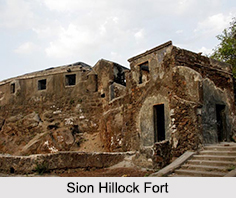 The Sion Hillock Fort is located in Mumbai, the capital city of the state of Maharashtra. The hill fort is located near the Sion railway station. In British India, Sion marked the boundary between Salsette Island under the Portuguese and Parel Island under the British East India Company. The site is currently open to visitors. The Sewri Fort and the Riwa Fort are situated near Sion Hillock Fort.
The Sion Hillock Fort is located in Mumbai, the capital city of the state of Maharashtra. The hill fort is located near the Sion railway station. In British India, Sion marked the boundary between Salsette Island under the Portuguese and Parel Island under the British East India Company. The site is currently open to visitors. The Sewri Fort and the Riwa Fort are situated near Sion Hillock Fort.
History of Sion Hillock Fort
The fort was built under the regime of the British East India Company. The construction of the structure started in 1669 and completed in 1677. In 1925, it was notified as a Grade I Heritage structure. It was founded by Gerard Aungier on the top of a cone shaped hill. Aungier was the first Governor of Bombay Presidency which was one of the three Presidencies in British India.
Architecture of Sion Hillock Fort
The Sion Hillock Fort consists of a small room at the top. It has a wooden trussed ceiling of old tree trunks. The room is connected with the main fort with a series of pathways. The site provides a panoramic view of the salt pans in the Thane Creek. The branch office of the Archaeological Survey of India (ASI) is located at the foot of the hillock. At present, the fortification is in a dilapidated state due to indifference and vandalism. The ruins of the walls and stone steps cover most of the fort premise.
Visiting Information on Sion Hillock Fort
The Mumbai Central station is the nearest railway station at a distance of almost 11 km from the fort and the Chhatrapati Shivaji International Airport is the closest airport at a distance of 9 km from the Sion Hillock Fort.
This article is a stub. You can enrich by adding more information to it. Send your Write Up to content@indianetzone.com.



















